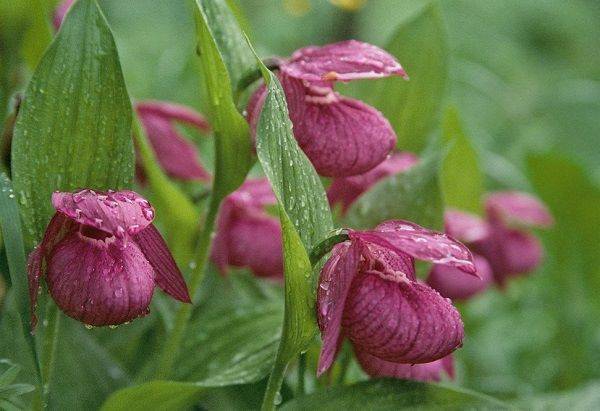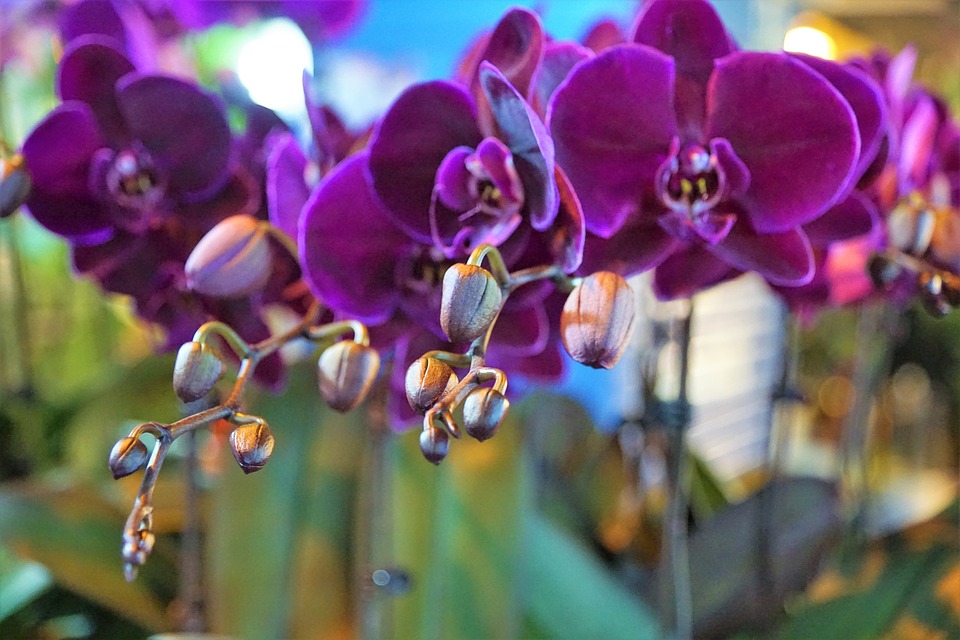When an orchid appears in an apartment and takes root there, the florist asks how to determine the age of tropical beauty and how long do orchids live indoors.
After all, it is known that even a completely healthy plant for no apparent reason sometimes simply dies quietly and the grower is not able to help him.

how long do orchids live indoors?
When starting a pet in the form of an orchid, the florist is usually interested in how long these beautiful plants live at home when properly cultivated.
It is impossible to answer this question unequivocally since in addition to competent care, there is also a dependence on which hybrids took part in the crossing of the seeds from which this specimen was obtained. But with a high probability, we can say that on average orchid plants live 6-9 years.
Orchids usually live 6 to 9 years.
Certain factors affect life span of orchid plan
Certain factors affect the life span of an orchid plant. First of all, it is proper care. A correctly done transplant is also important since no one transplants orchids in natural conditions. Various diseases and harmful insects significantly reduce the life of the orchid specimen.
Also, life expectancy depends on belonging to the species and variety, so Phalaenopsis live for about 9 years, and Cattleya and Dendrobium no more than 4 years.
How many years can an orchid last? oldest phalaenopsis orchid
There is a rating of centenarians among orchids, which was compiled by experienced florists based on photographs and stories of the florists themselves:
- 1st place – Pafiopedilum is over 150 years old;
- 2nd place – Dendrobium according to an eyewitness, has been living for 20 years;
- 3rd place – Cattleya, life expectancy 18 years.
Some growers talk about the longer lives of individual hybrids, but this was not recorded by documentary photography.
IMPORTANT! All growers claim that longevity directly depends on quality flower care.
Check our guide on How do you get an orchid to bloom again indoor?
orchid with shortest lifespan
The following types of orchid plants have the shortest lifespan:
- Venus’s Shoes;
- Dendrobium and Pafiopedilum for 5 years.
The lady’s slipper has the shortest lifespan.
It can also be said that a monopodial species lives less since it has only one growth point, and if it dies, then it is very difficult to restore the flower.
How do you know how old an orchid is?
Estimating age of orchids
It is impossible to know the exact age, but the approximate age can be established by the following factors:
- The short trunk of the orchid plant indicates that it is young;
- There are few leaf plates and they are small in size;
- The hemp of cut flower shoots speaks about the age. Since most often they begin to bloom at the age of 3 years, then we can talk about the age of the flower.
A young rosette blooms only for 3-5 years, depending on the type of orchid.
Do orchids live better inside or outside?
Scientists botanists have recorded cases of the longevity of Phalaenopsis, who lived in their natural habitat and their life span was about 200 years.
At home, the plant lives several times less, because they are influenced by such factors:
- Strong change in air quality caused by various pollution;
- Sharp temperature fluctuations;
- Inappropriate humidity;
- Various diseases caused by fungi and viruses;
- The appearance of pests on the plant itself.
IMPORTANT! Proper care is the key to the longevity of your orchid.

how to make orchids last longer?
For a plant to be healthy, it is necessary to organize the right conditions for its existence. And he will make sure that it is not exposed to an invasion of pests.
Ambient temperature and humidity
These are two factors that must be met unswervingly. So, the temperature should be in the range of 23-27 degrees Celsius. Deviations towards the cold threaten frostbite, and warming above 27 degrees can provoke overheating not only of the leaves but also of the root system of the orchid.
Humidity also plays a significant role, especially at the moment when the plant needs to expel the flower arrow. At this point, you need to make sure that the humidity in the room reaches 85%.
Humidity and temperature are critical factors for an orchid.
Read also Do You Cut Off Dead Orchid Stems?
Effects of correct watering
How long an orchid lives in a pot is most significantly influenced by a properly built watering scheme:
- If watering is not adjusted and is supplied to the plant very rarely , then the roots will dry out for too long, and at this moment the velamen may collapse on them . As a result, the roots will gradually begin to die off. And a small amount of root mass will not be able to feed the green vegetative part, and therefore the lower leaves of the bush will begin to die off. In this case, there can be no talk of longevity;
- The second extreme among flower growers is the overflow of the plant . From frequent and abundant watering, the substrate becomes waterlogged , and the roots stop breathing oxygen. After which they soften due to rot. And the plant is subject to resuscitation actions to build up the root mass.
For flowering
Sometimes, with good care and the presence of hormone residues after growing in Dutch greenhouses, a flower can please its owner with three arrows. It should be noted that the flower after such flowering can be severely depleted.
To prevent this, when all the arrows bloom, we are surprised and admire the bloom, then we photograph it for history and cut out 1-2 peduncles. After that, the orchid blooms with the rest of the flower shoots, and we put those that were cut off in the water, where they can stand and delight the grower for more than a month.
An orchid can stand in a vase for up to one month.
Rest period
After flowering or at high ambient temperatures, the plant begins a dormant period. It can last 1-3 months, during which the plant recovers its strength. At this time, watering is done as needed, preventing the substrate from completely drying out, but also not flooding the flower.
When the flower leaves the dormant stage, watering is increased and fertilizers are added to it twice a month.
IMPORTANT! Fertilize the orchid with a specialized fertilizer and only on wet roots, so as not to burn the velamen.
Stimulation of flowering and the appearance of babies
Only completely healthy plants need to be stimulated. Because stimulation inhibits the development of root mass and leaves. Therefore, by the time the grower decides to stimulate, the orchid should be ready for it.
Only a completely healthy plant can be stimulated.
For a young and old plant
There is no difference in care. The only difference is if a young orchid is planted in a small container, then it will dry out faster, so you will need to be more careful about watering. And transplant it only if necessary, since after transplanting the flower may become slightly ill.
You may also like Sphagnum Moss For Orchids.
How to Revive a Dying Orchid?
You can rejuvenate orchid plants. There are different ways to rejuvenate an orchid and they depend on its growth:
- Monopodial plants are cut off the top with 6-9 leaf plates, dried and planted in a new container, following all the rules. On the remaining hemp, after a certain time has elapsed, children may appear, which grow to a certain size and are planted in a new container;
- Sympodial orchid plants are removed from the container and divided into parts in a specific way. Then they are seated in separate containers.
IMPORTANT! All cuts and cuts on the plants are made with a disinfected pruner or knife.
Conclusion
How long orchid bushes live depends on their quality of life, and the better it is, the longer they will live. You need to take care of your orchid and then it will stay with its owner for a long time and delight him with its tropical flowering.
